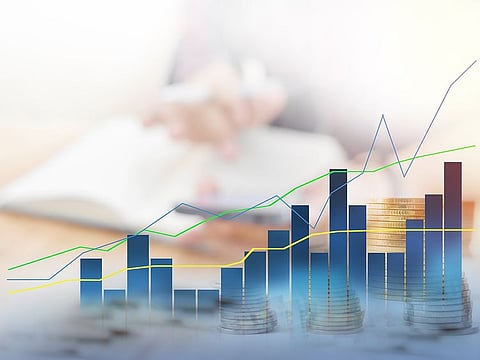Should investors prepare for a winter chill in global market sentiments?
Should investors hold the line from any knee-jerk sell-offs?

To look at the history of financial markets is to dissect data and uncover narratives that hold the power to astonish.
The first is that market crashes prior to 1987 heralded the onset of economic conditions that were dire. However, 1987’s ‘Black Monday’ was the first of a new breed: a crash that suggested dire consequences but in the end had no serious effects at all. The subsequent bursting of the Internet bubble, the Russian default, and the collapse of LTCM had seemed, in the heat of the moment, to change the world as we know it, and yet turned out to be a big deal.
Until the US subprime market collapse of 2007, which went back to the business of market crashes having catastrophic consequences. All of these extreme events have been compressed into a fantastically short space of financial history (we have had a flash crash and the Covid meltdown since then).
To the layman, it brings up another obvious point: markets have been terrible at predicting events. The best of times, have truly been followed by the worst of times.
From 1929, to 1973 (the decade of stagflation), to the Japanese bubble bursting which depressed economic growth for the better part of two decades, market commentary and valuations were at their cheeriest just before the onset of a crisis.
A cooling off or something deeper?
Never in the history of financial and real estate markets has there been a period of double- and triple-digit gains that has not been followed by a brutal sell-off. The only question to ask is whether in this cycle, whether the sell-off will have mild consequences to the real economy, or whether there will be a prolonged period of economic malaise.
The second theory is that has gained traction over the last 40 years has been the lack of relevance of dividends. In fact, too high a dividend yield has often been a signal for corporate stress (just like abnormally high real estate yields have been a red flag).
Again, history seems to be pointing to a different direction. Over the last 10 years, the top decile dividend bearing ETFs (not the best way to allocate in the first place) have outperformed the S&P 500 Total Return Index (net of expenses) by nearly a percentage point on an annualized basis.
These two data sets taken together point to an ominous period ahead for global investors.
For the local markets, valuations have been much lower, in part because of the geopolitical tensions and because the markets have thus far been largely devoid of AI plays, with the government and the private sector offering traditional wares.
NMDC Energy clears successful IPO
NMDC Energy has been the latest example of such an offering, where the dividend yields have been as attractive as the profit growth, enabling the investor to build an income portfolio, whilst recognizing that the markets could once again be entering into a period of globally subdued (even negative) returns.
The rationale behind the thinking goes something like this: markets misprice risk all the time. And just when things seem to be at their most ebullient is exactly when the level of mispricing is completely off.
Fund managers and individual day traders looking for monthly and annual performance yardsticks frequently miss the bigger picture. Even as the debate returns to the headlines of the financial media as to what the latest market gyrations mean, there remains an underlying assumption that somehow the US Federal Reserve will pull it off.
Historically speaking, the level of interest rates have a very low correlation with the direction of the markets (even accounting for a lag) if the impact is to be measured on a yearly basis.
So, we have once again the debate of the clergy of managers versus the millions of individual (and sometimes blissfully unaware) individuals who will be affected by the course of what happens in the next few months.
At stake is the fundamental question: could the market be built on an idea that badly underestimates the risk of catastrophes and instead places all of its chips on capital growth (with no regard to dividends and total returns).
And thus perversely conspires to create them?
Sign up for the Daily Briefing
Get the latest news and updates straight to your inbox




